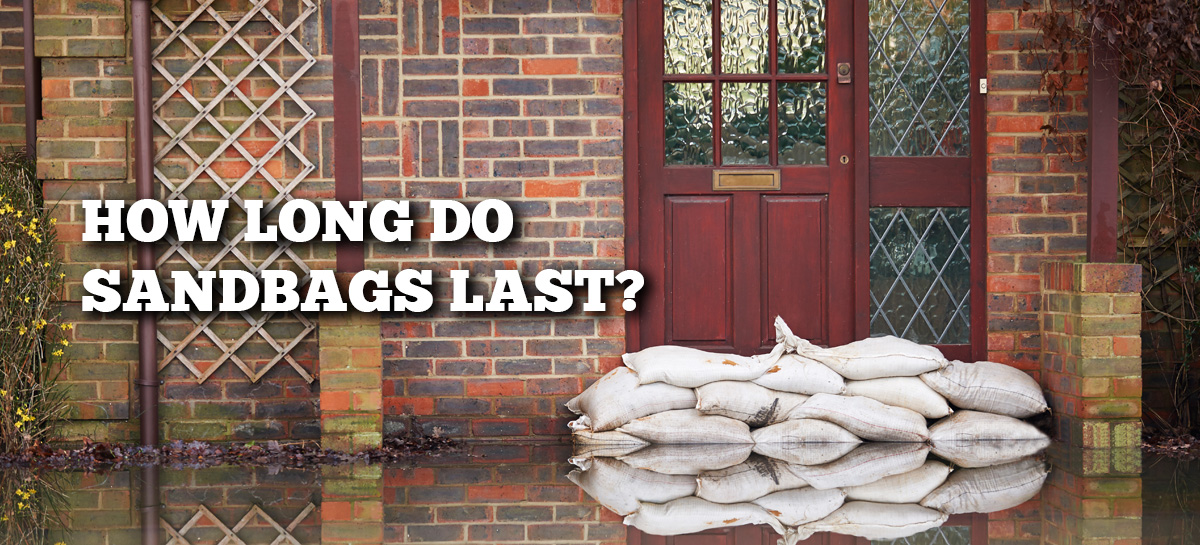How Long Do Sandbags Last? (& What Impacts Longevity?)

Sandbag longevity is between 8 months and a year, depending on the material used and environmental conditions. High-quality polypropylene sandbags can last several years if stored properly, while burlap alternatives may only last one season. Factors like UV exposure, moisture, and physical stress significantly impact their lifespan, so proper maintenance is essential.
Regular cleaning, careful storage away from direct sunlight, and prompt damage repair can extend their effective use.
Before we can assess longevity in detail, we must ask: what are sandbags made of and what are sandbags used for? Knowing the construction and intended applications of sandbags reveals that material composition plays a key role in durability and effectiveness.
Our sand bags for sale are designed to safeguard your property and provide peace of mind during storms. Call us at 888-252-5331 or contact us online to learn more.
How long do sandbags last by type?
Knowing the lifespan of your sandbags is essential for effective flood control. Different materials offer varying longevity based on water exposure, UV radiation, and overall maintenance.
Now, let’s break down how long sandbags last by type and explain what can affect their durability so you can plan your flood defense accordingly.
Canvas Sandbags
Canvas sandbags are a practical choice for creating an effective flood barrier in emergencies. They generally last around 8 months to a year if properly maintained. However, their heavier weight can make them harder to stack quickly, so a team may be needed for installation in areas like a public works yard or near roadway gutters.
Regular maintenance—such as checking for small debris and disposing of used or old sandbags—is important for ensuring they continue to protect your property effectively.
Hessian (Burlap/Jute) Sandbags
Sandbags made of burlap—a type of hessian typically including jute—are a common, natural option. These burlap sandbags typically last 8 months to a year in areas with mild weather. However, prolonged exposure to water, over-saturated ground, or direct sunlight (for example, near a creek or canal) can cause them to rot quickly.
They work well for temporary flood control when resources are spread thin, but residents are encouraged to check them regularly. If you need to protect an area in the city or county, remember that local soil can be used to fill sandbags a little over ½ full, leaving space to tie the bag shut.
PVC Sandbags
PVC sandbags offer an extra level of waterproofing and are particularly useful in areas where floodwater is expected to rise rapidly—such as near a river, lake, or vehicle storage site. They typically last from months to a year under heavy use.
While their tight, secure structure helps protect against water intrusion, exposure to the elements may eventually cause cracking or rot. It’s important to clear every storm drain inlet and use a rake to remove small debris, such as leaves and branches, to maintain their integrity.
Additional reading: erosion control sandbags
Reinforced Woven Polypropylene Sandbags
This type of sandbag features extra reinforcement for added strength and durability, making them ideal for high-pressure flood events. Reinforced woven polypropylene sandbags typically last several years because they withstand UV exposure and water with minimal degradation.
They are often used to build a robust structure where precise measurement per foot is necessary. Always check these sandbags regularly and use a sandbag calculator to determine the correct amount needed to protect your area.
Additional reading: heavy-duty sandbags
UV-Protected Woven Polypropylene Sandbags
UV-resistant sandbags are made from durable polypropylene that is UV-protected to resist degradation from direct sunlight and harsh weather. Typically, they last several years, providing a robust barrier against floodwater in critical areas such as public works yards or roadway gutters.
To ensure longevity, always fill sandbags a little over ½ full with sand (or, if sand isn’t readily available, local soil), and check them periodically for any signs of wear. Their strength and resistance to the elements make them the best option for long-term flood control.
Additional reading: military sandbags
Vinyl Sandbags
Vinyl sandbags provide a resilient option for flood control, especially in areas prone to heavy runoff, such as near a canal, ditch, or creek. They generally last 8 months to a year under rigorous conditions, thanks to their impermeable surface that prevents water seepage.
However, they require careful maintenance to ensure that debris—like small branches, sticks, and leaves—does not block drain inlets or compromise the bag’s integrity. Quick action from local staff to clear obstructions helps keep these sandbags effective.
Additional reading: empty sandbags
Reach out to Palmetto Industries — we are industry-leading sandbag suppliers
At Palmetto Industries, our sandbags are engineered to last longer than cheaper alternatives. As one of the leading sand bag manufacturers, we use UV-resistant materials, industrial-grade stitching, and reinforced seams to provide superior durability and long-term savings by withstanding harsh weather conditions and repeated use.
Unlike low-cost options that may fail when floodwater levels rise, our high-quality sand bags for sale maintain their integrity over time, ensuring reliable flood protection.
Our products are built to protect your property and deliver peace of mind during storms. Call us today at 888-282-3524 or contact us online for more information.
How long do sandbags last? Final points
Sandbag longevity is defined by the material used and proper usage. High-quality, water-resistant, or coated sandbags—paired with knowing how to correctly fill and how to tie a sandbag—last much longer than cheap, used, or old sandbags.
Regular maintenance is essential: use a rake and remove and dispose of small debris, clear every blocked drain inlet, and ensure dumpsters and erosion-prone areas near a pond, stream, or canal are kept free of obstructions. In the spring, check your system within your area to address any potential problem quickly; staff should respond immediately if parts of the barrier need to be cleared.
Remember, sand is preferable if readily available for filling, and proper sealing prevents premature failure. For those considering a separate flood insurance policy, investing in high-quality sandbags can help reduce your risk.





